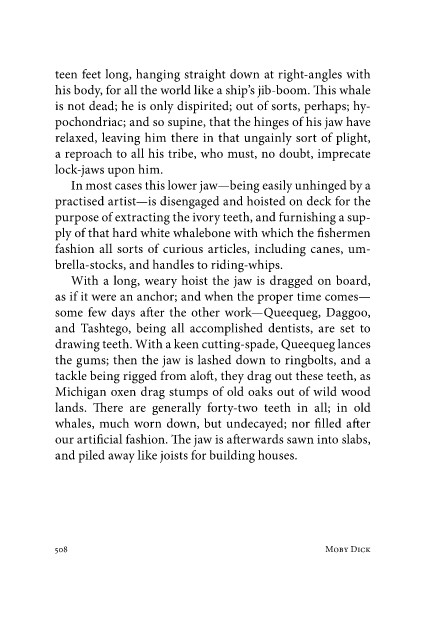Page 509 - moby-dick
P. 509
teen feet long, hanging straight down at right-angles with
his body, for all the world like a ship’s jib-boom. This whale
is not dead; he is only dispirited; out of sorts, perhaps; hy-
pochondriac; and so supine, that the hinges of his jaw have
relaxed, leaving him there in that ungainly sort of plight,
a reproach to all his tribe, who must, no doubt, imprecate
lock-jaws upon him.
In most cases this lower jaw—being easily unhinged by a
practised artist—is disengaged and hoisted on deck for the
purpose of extracting the ivory teeth, and furnishing a sup-
ply of that hard white whalebone with which the fishermen
fashion all sorts of curious articles, including canes, um-
brella-stocks, and handles to riding-whips.
With a long, weary hoist the jaw is dragged on board,
as if it were an anchor; and when the proper time comes—
some few days after the other work—Queequeg, Daggoo,
and Tashtego, being all accomplished dentists, are set to
drawing teeth. With a keen cutting-spade, Queequeg lances
the gums; then the jaw is lashed down to ringbolts, and a
tackle being rigged from aloft, they drag out these teeth, as
Michigan oxen drag stumps of old oaks out of wild wood
lands. There are generally forty-two teeth in all; in old
whales, much worn down, but undecayed; nor filled after
our artificial fashion. The jaw is afterwards sawn into slabs,
and piled away like joists for building houses.
0 Moby Dick

